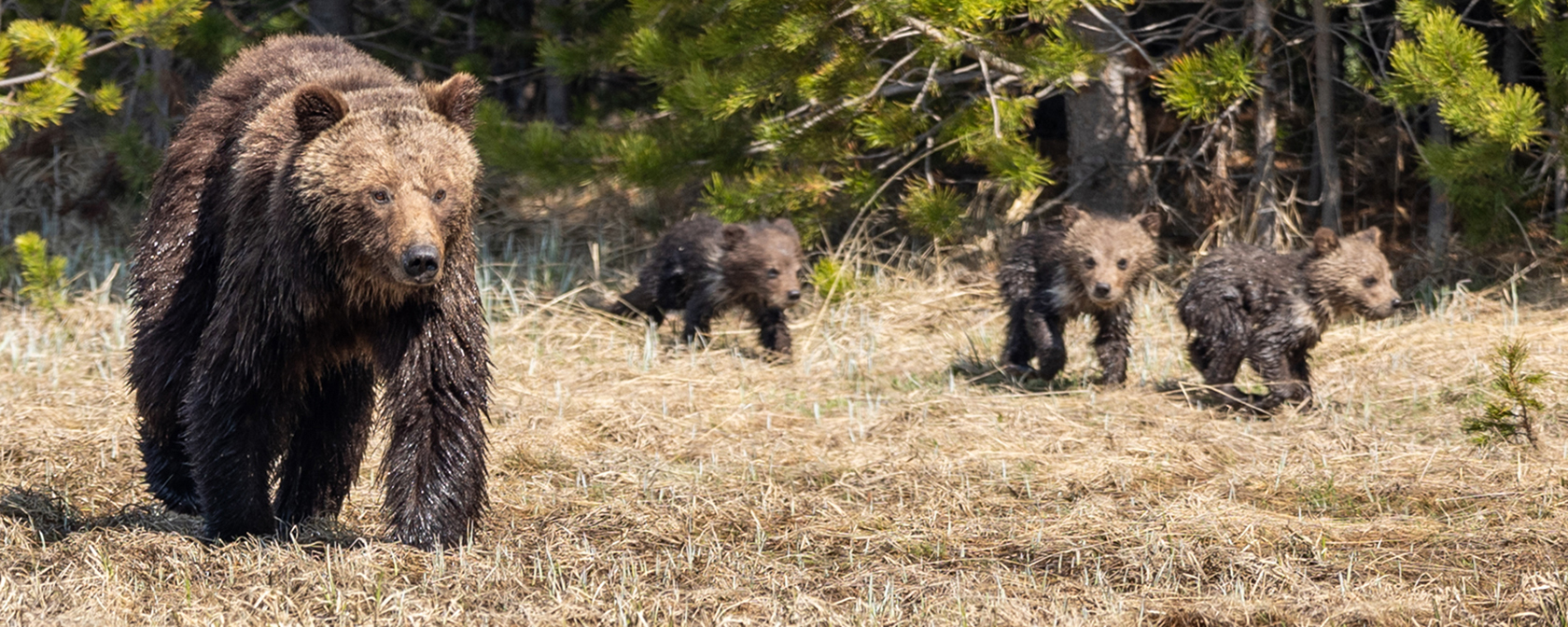By Sara Amundson and Kitty Block
On Wednesday afternoon, in a move supporting the notion that the species needs more time to recover, the U.S. Fish and Wildlife Service announced that it would not prematurely remove Endangered Species Act protections from grizzly bears living in the Greater Yellowstone and Northern Continental Divide ecosystems—the two largest populations in the continental U.S. Wyoming and Montana had petitioned the agency to delist grizzly bears and turn the management of the animals over to the states.
Had the federal government delisted bears living near Yellowstone and Glacier National Parks, it would have essentially imposed an “open season” on them, igniting a trophy-hunting spree that could decimate their fragile populations. This is an all too familiar threat: In 2017, when the U.S. Fish and Wildlife Service removed protections from grizzly bears in the Greater Yellowstone Ecosystem, both Idaho and Wyoming swiftly organized trophy hunts.
Grizzly bears once ranged from northern Mexico to Alaska, and in the lower 48 states they numbered well over 50,000 individuals in the early 1800s. By the 1930s, unregulated killing, bounties and fragmentation and destruction of habitat nearly wiped them out. Listing grizzly bears under the federal Endangered Species Act in 1975 helped to bring the population back from an estimated 135 remaining bears, effectively snatching this species from the brink of extinction. The current estimate of their population in the lower 48 states stands at about 2,000.
This number does not mean that all is well, and the reality is that the species is just beginning its recovery. And that is why we and approximately 100,000 of our supporters urged the agency to reject Wyoming and Montana’s petitions and retain protections for grizzly bears in the face of this persistent threat.
We are heartened by the news that the fate of grizzly bears will not be turned over to states that would surely open up trophy hunting seasons on the animals. But sadly, as is often the case when it comes to grizzly bears, the news isn’t all good.
In the same announcement, the U.S. Fish and Wildlife Service also proposed granting ranchers and state and federal agents increased flexibility to kill grizzly bears, even as the species remains under federal protection. This raises significant concerns, as these groups are the primary threat to grizzly bear conservation efforts, according to recent government data.
The Fish and Wildlife Service decided that all grizzly bears living in the lower 48 states should be treated as one population, which will stay classified as “threatened” under the Act. This move promises to give grizzly bears a greater chance at survival.
Grizzly bears have one of the slowest reproduction rates among mammals, so hunting can have devastating effects on their populations. They are not adults until they are 4 to 8 years old, the interval between litters is three to four years, and litter sizes are small. It can take 10 years for a single female to be replaced in a population. Trophy hunts and predator control campaigns can wipe out hundreds of bears at once.
We continue working hard to remind the Fish and Wildlife Service of its duty to protect grizzly bears from dire threats of extinction. And such protection must also include prohibiting ranchers and state and federal agents from gunning down bears they deem “nuisances.”
You can help tell the Service that giving more power to state agencies and special interests to kill bears undermines efforts to protect grizzly bear populations. Instead, the agency must stay sharply focused on protecting the species and increasing its actions and funding to prevent negative human-bear interactions. Please help us make the case here. Contact the Service to share your view that no industry should be allowed to kill grizzly bears when humane solutions to wildlife conflict exist.
Sara Amundson is president of Humane Society Legislative Fund.




